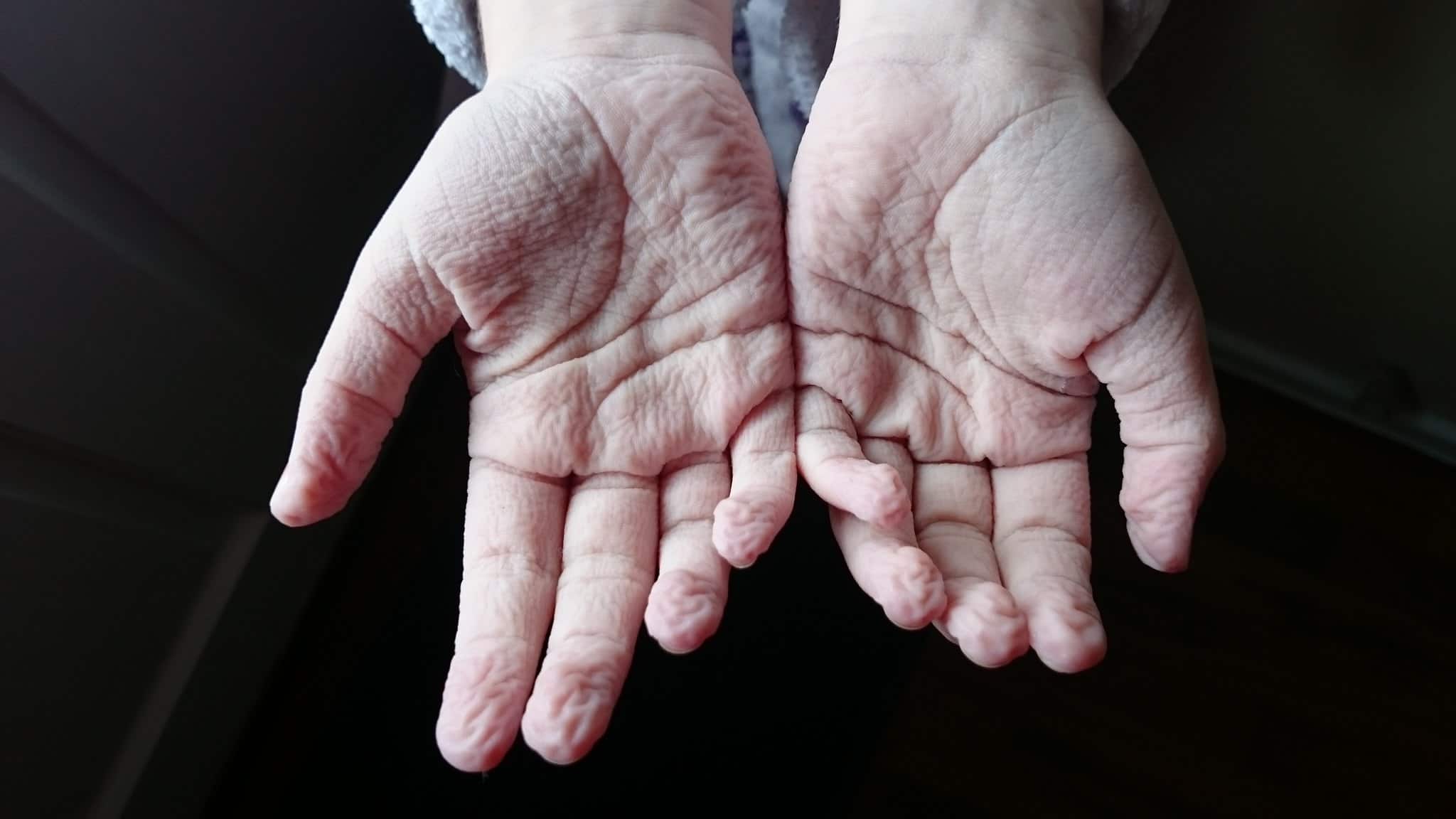
Skin is an awesome and weird organ. As the body’s biggest organ, it does a lot to look after you, protecting you from the outside world of sunlight, harsh chemicals, nasty germs and severe cold. And it does all this while keeping water inside your body and enabling the sense of touch.
I’m a biomedical engineer. My research team and I try to better understand the mechanics and function of soft biological tissues.
We know skin wrinkles as you get older or when you pinch it between two fingers. But it’s been somewhat of a mystery why skin gets wrinkly and even sometimes changes color after you take a leisurely bath or spend too long in the swimming pool.
Often people assume that these wrinkles form because the skin absorbs water, which makes it swell up and buckle. To be honest, I did too for a long time.
But researchers back in the 1930s discovered that in people with nerve damage in their fingers, the post-bath wrinkles didn’t form. Wrinkly fingers can’t just be due to water absorption then, or this would be a universal phenomenon, no matter how well your nerves are or aren’t working.
So, if it isn’t swelling due to water, then what is behind pruny fingers and toes after a long swim? Scientists have recently discovered what they think is the answer.
A nerve signal for narrower blood vessels
To explain what is happening, first you need to know a bit about the autonomic nervous system – the involuntary part of how your body works. Functions like breathing, blinking, your heart pumping or your pupils constricting in the sun all happen without your needing to consciously control them, thanks to the autonomic nervous system.
It also automatically controls the expansion and contraction of your blood vessels. Typically, temperature, medications or what you eat or drink can cause your blood vessels to expand or contract. Think of how your skin may flush of its own accord when you go out into a hot day, exercise or even blush.
This contraction of your blood vessels is also what causes the skin to wrinkle after a lengthy swim.
When your hands and feet come into contact with water for more than a few minutes, the sweat ducts in your skin open, allowing water to flow into the skin tissue. This added water decreases the proportion of salt inside the skin. Nerve fibers send a message about lower salt levels to your brain, and the autonomic nervous system responds by constricting the blood vessels.
The narrowing of the blood vessels causes the overall volume of skin to reduce, puckering the skin into these distinct wrinkle patterns. It’s like how a dried-out grape becomes a wrinkled raisin – it’s lost more volume than surface area.
This constriction of blood vessels also causes the skin to become paler – it’s the opposite of what happens when your skin gets redder when you get into a really hot bath, due to your blood vessels dilating. The color change is a little more obvious in people with lighter complexions.
With nerve damage, this constriction doesn’t occur. The blood vessels never get a message to narrow, so the wrinkles never happen even if you stay in the bath for a really long time.
An advantage to wrinkled fingers or toes
But does this skin wrinkling-when-wet serve any purpose?
Researchers have found that wrinkled skin has added grip underwater in comparison to unwrinkled skin. Better grip lets you grasp objects more firmly. It makes walking along an underwater surface easier, with less likelihood of slipping. I think this is a fantastic feature to have evolved over time.
My research team and I have performed studies to look at changes in skin structure and function with prolonged immersion in water, but not to study wrinkles. We’re interested in skin analyses that can be done to help forensic investigators after a crime or disaster. We also want to learn more about immersion foot syndromes – skin injuries caused by working in wet environments for long periods. They tend to affect military personal, or farmers whose crops grow in flooded fields, such as rice paddies.
Prolonged immersion in water makes skin more likely to break, but this weakening can take weeks to occur. Just don’t stay in the swimming pool too long and your pruny digits will go back to normal once you’ve dried off.
Hello, curious kids! Do you have a question you’d like an expert to answer? Ask an adult to send your question to CuriousKidsUS@theconversation.com. Please tell us your name, age and the city where you live.
And since curiosity has no age limit – adults, let us know what you’re wondering, too. We won’t be able to answer every question, but we will do our best.
Guy German, Associate Professor of Biomedical Engineering, Binghamton University, State University of New York
This article is republished from The Conversation under a Creative Commons license. Read the original article.


